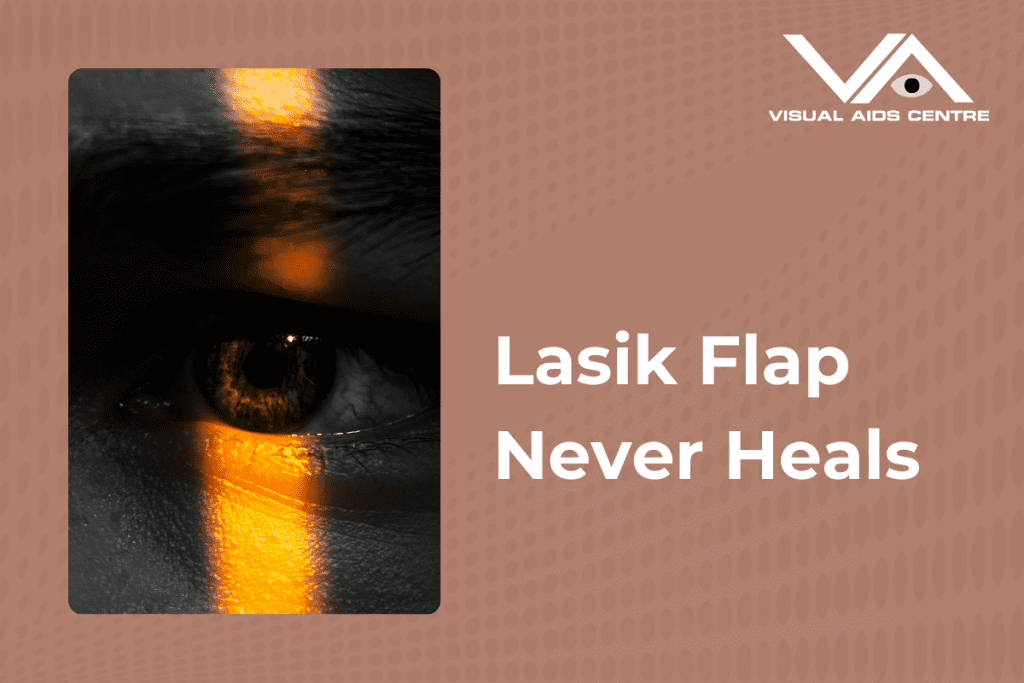Table of Contents
ToggleLASIK, or Laser-Assisted In Situ Keratomileusis, is a widely recognised vision correction procedure that has revolutionised ophthalmology and changed the lives of millions worldwide. It offers people with poor vision a chance to see clearly without the need for glasses or contact lenses. Despite its widespread acceptance and popularity, misconceptions persist, particularly concerning the healing process of the corneal flap created during surgery.
This article aims to debunk these myths and provide a thorough understanding of the LASIK flap healing process.

Understanding the LASIK Flap
During LASIK surgery, a small flap is meticulously crafted in the cornea. This flap is then gently lifted to allow the surgeon to reshape the underlying cornea to correct vision.
The success of this intricate process hinges on the skill of the surgeon and the advanced technology employed.
Following the surgery, the flap is repositioned without the need for stitches, marking the beginning of the healing journey.
The Healing Timeline
The healing timeline post-LASIK surgery can be divided into several distinct phases – immediate post-surgery, the first 24 hours, the first few weeks, and three months and beyond. Each phase represents a crucial milestone in the healing process.
Immediate Post-Surgery:
The flap begins to adhere due to natural suction forces and cell regeneration following the creation of the corneal flap and laser reshaping of the underlying stroma. This initial phase is critical as it sets the stage for the subsequent healing process.
The First 24 Hours:
Key in this initial stage is the establishment of adhesion between the flap and the stroma beneath. This bond is primarily facilitated through bioadhesion and the formation of new cellular connections.
First Few Weeks:
During this phase, healing accelerates. The integration of the flap and the stroma is reinforced through increased cellular communication and collagen deposition, which is crucial for tissue repair and strength.
3 Months and Beyond:
Marking the culmination of the healing process, the flap and surrounding tissue achieve a significant level of integration, with the cornea regaining much of its pre-surgical integrity and strength.
Debunking the Myth: Is it True That the LASIK Flap Never Fully Heals?
The notion that the LASIK flap never fully heals is misleading.
This assertion is not merely anecdotal but is backed by numerous scientific studies that have confirmed strong adhesion between the flap and stroma and the effective functionality of the flap following the healing process. Research substantiates that considerable healing of the flap occurs within the initial three months post-surgery.
These studies provide reassurance to patients undergoing LASIK surgery and debunk the myth that the flap never fully heals.
Factors influencing this healing include the surgical technique used and the post-operative care provided. Both play vital roles in ensuring a smooth and effective healing process. Modern surgical techniques have significantly improved the safety and effectiveness of LASIK surgery, while diligent post-operative care ensures the flap heals properly and quickly.
Addressing Potential Complications: Flap Dislocation
One potential complication post-LASIK surgery is the dislocation of the flap due to factors like external trauma or suboptimal initial healing. While this is a rare occurrence, it is crucial to be aware of this possibility.
Early detection and treatment can effectively address this issue, minimising the risk of long-term complications. This is yet another reason why maintaining regular follow-up appointments with your ophthalmologist is so important.
The Healed LASIK Flap: Vision with Minimal Risks
Once the LASIK flap has healed, individuals can expect excellent vision and minimal risk of complications.
- Long-Term Strength: The flap achieves commendable tensile strength after healing, facilitating a return to everyday activities without undue concern.
- Durability of Results: Provided that age-related visual changes or specific eye conditions do not intervene, the improvements from LASIK are enduring.
Living with a healed LASIK flap is like having a new lease on life, particularly for those who have lived with poor vision for a long time. The joy of seeing the world clearly without the need for glasses or contact lenses is truly transformative.
The Path to Clear Vision
LASIK surgery offers a safe, effective, and transformative vision correction option for many individuals. While the initial healing period is critical, the LASIK flap regains significant strength and stability within a few months. Open communication with your ophthalmologist regarding any concerns and diligently following post-operative instructions ensures a smooth recovery and optimal long-term results.
Always remember: This article provides general information and does not substitute professional medical advice. Always consult a qualified ophthalmologist to discuss your individual suitability for LASIK surgery and address any specific concerns you may have.
Understanding the LASIK flap healing process helps debunk myths, manage expectations, and ultimately lead to a successful vision correction journey.









